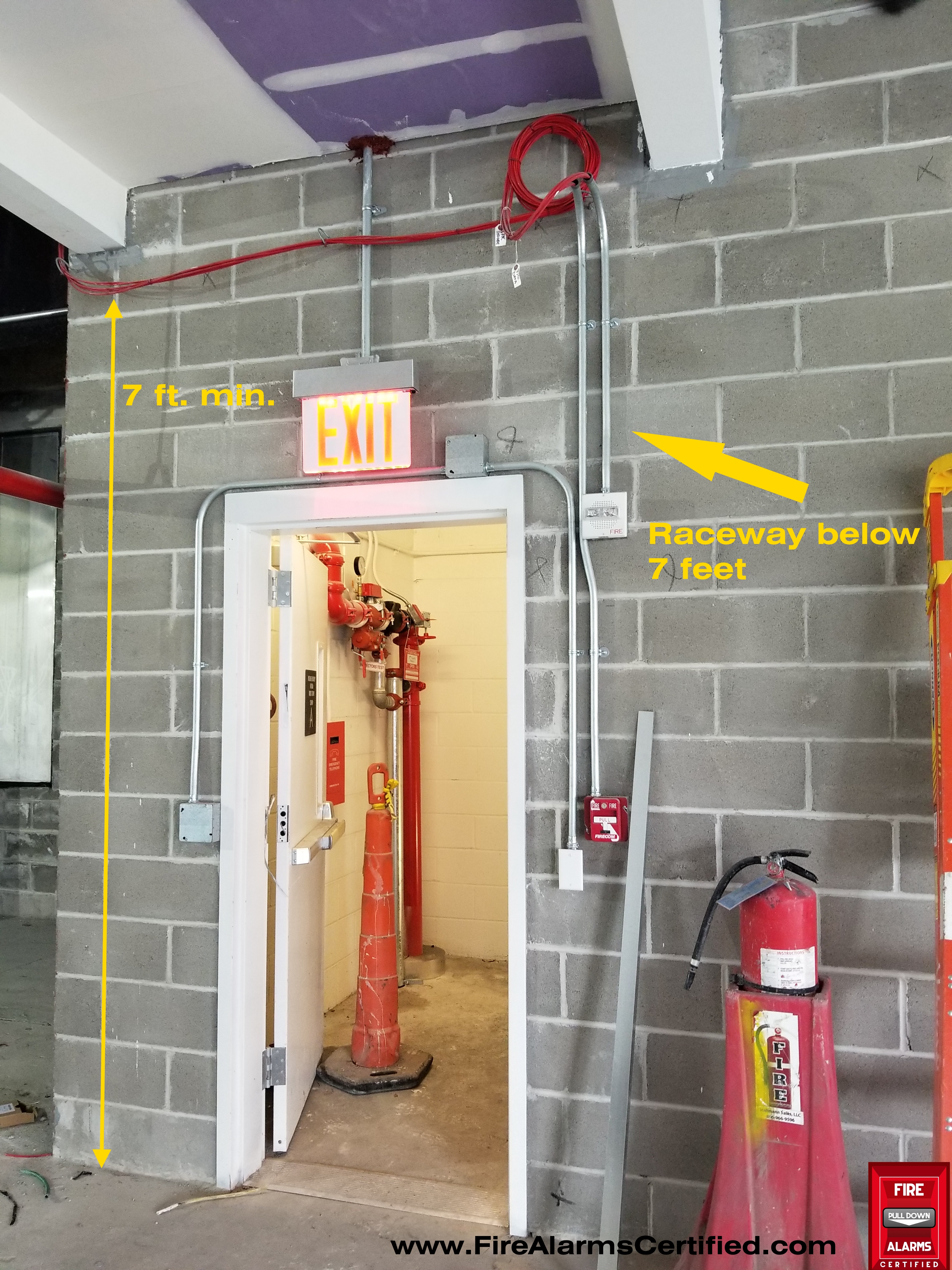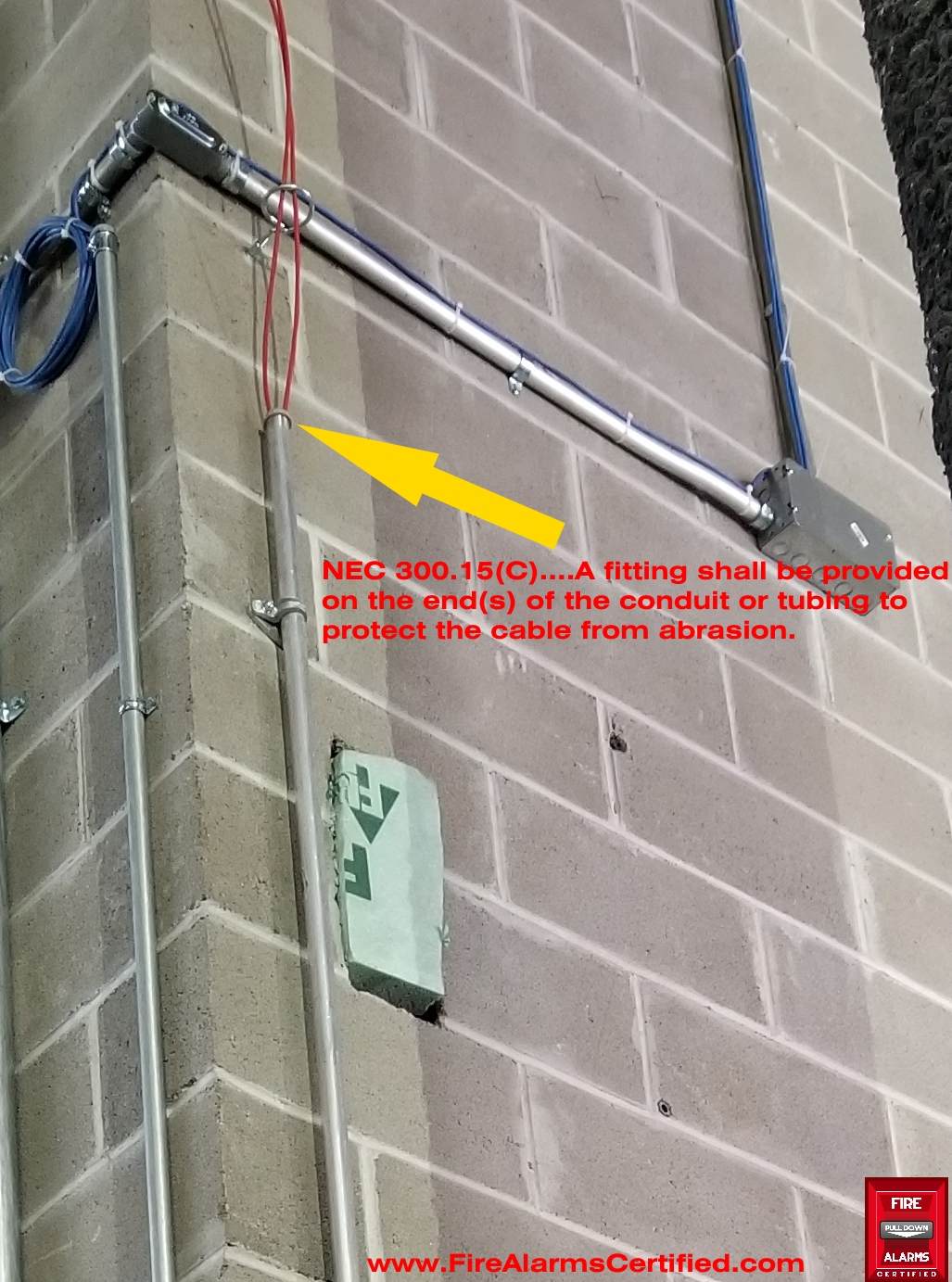Can fire alarm cables be installed exposed?
The answer to this question is not as straight forward as one may think. Fire alarm cables (Power-Limited) can be installed exposed (not in raceway) as long as it is protected against physical damage. We can find installation requirements in the National Electrical Code, article 760:
NEC 760.130(B)(1) Exposed or Fished in Concealed Spaces. In raceway or exposed on the surface of ceiling and sidewalls or fished in concealed spaces. Cable splices or terminations shall be made in listed fittings, boxes, enclosures, fire alarm devices, or utilization equipment. Where installed exposed, cables shall be adequately supported and installed in such a way that maximum protection against physical damage is afforded by building construction such as baseboards, door frames, ledges, and so forth.
Article 760 allows fire alarm cables be installed exposed as long as it is protected against physical damage. On most installations, a basic rule of thumb to use is that any fire alarm cable installed above 7 feet can be installed exposed; below 7 feet the cables shall be in a raceway. This height comes from the NEC itself when describing how to install fire alarm cables that are passing through a floor or wall:
NEC 760.130(B)(2) Passing Through a Floor or Wall. In metal raceways or rigid nonmetallic conduit where passing through a floor or wall to a height of 2.1 m (7 ft) above the floor…
The National Electrical Code requires that fire alarm cables passing through a floor be sleeved in a raceway up to a height of 7 feet, as described above. This is to offer protection from physical damage to the cable itself. Below we have a picture of an installation at a new office building.
When fire alarm cables enter or exit a raceway that is being used to provide protection against physical damage, NEC 300.15(C) requires that a fitting be used on the ends of the conduit in order to protect the cables from abrasion.
NEC 300.15(C) Protection. A box or conduit body shall not be required where cables enter or exit from conduit or tubing that is used to provide cable support or protection against physical damage. A fitting shall be provided on the end(s) of the conduit or tubing to protect the cable from abrasion.
This scenario can be worded for the NICET certification exam as follow:
What shall be required at the ends of conduit housing fire alarm cables as per NEC? The student (you) are required to navigate the NEC code book in order to find the answer.
If you would like more NICET certificate fire alarm exam questions, check out our study guides:
Level 1 –>> http://firealarmscertified.com/fire-alarms-systems-nicet-level-1-exam-study-guide/
Level 2 –>> http://firealarmscertified.com/nicet-fire-alarm-systems-level-2-study-guide/
Learn more about becoming NICET Certified -> https://www.nicet.org/become-certified/


